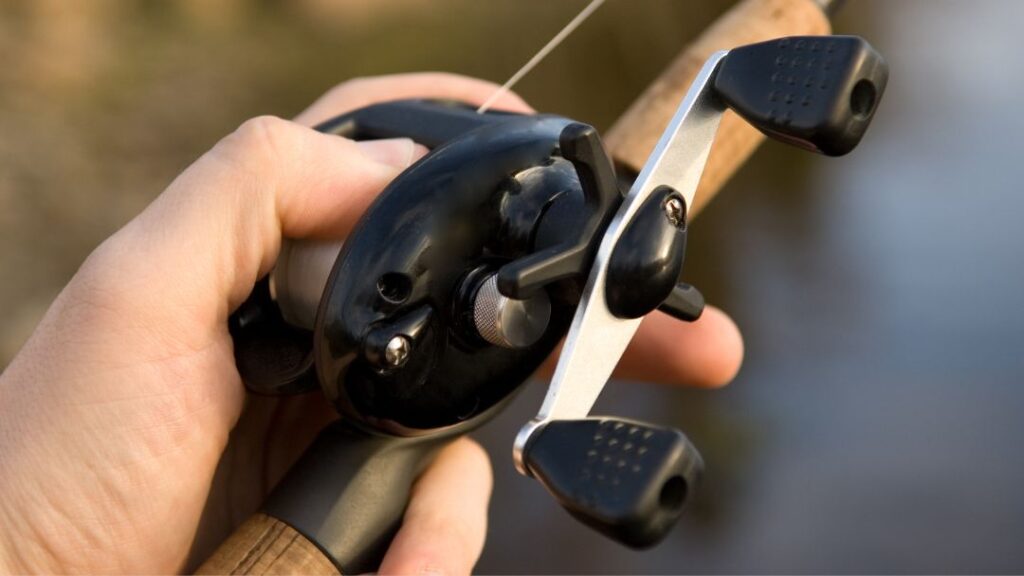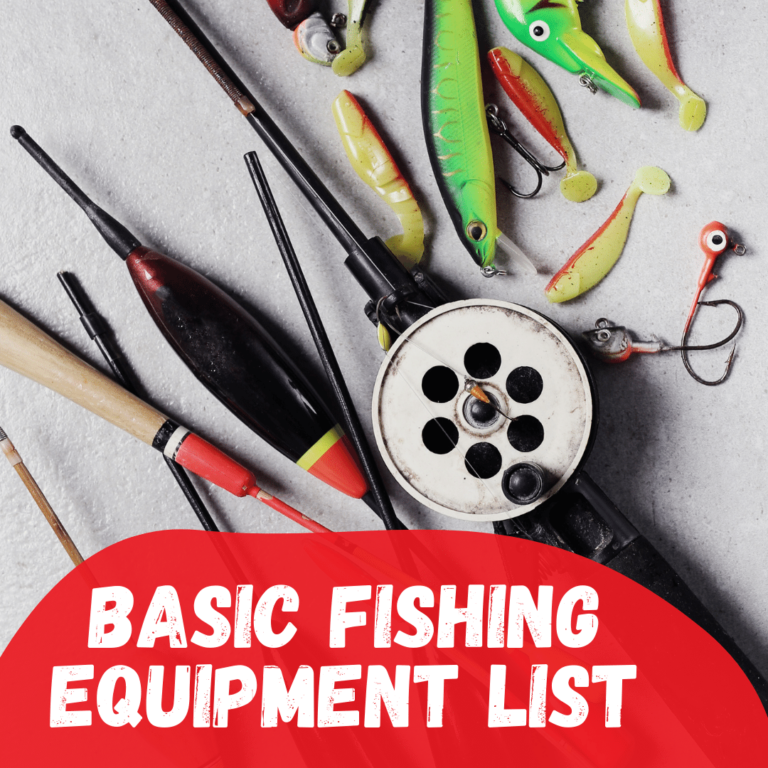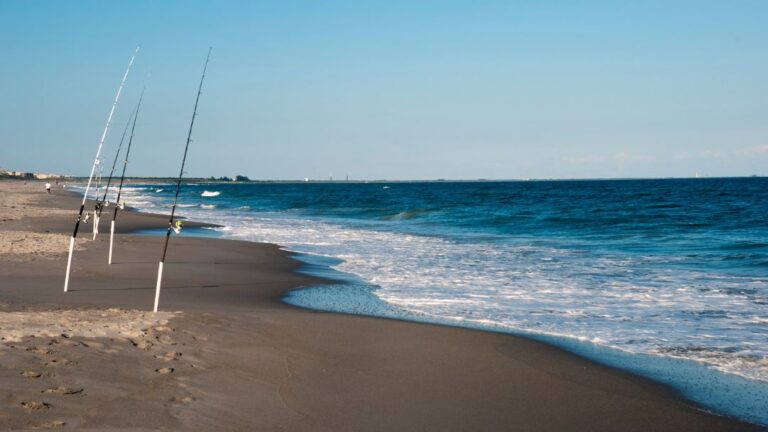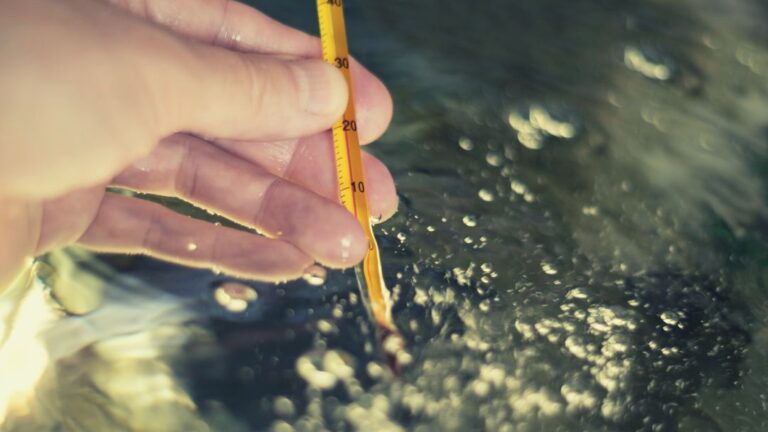Regardless of what you are fishing, using specially designed or suited fishing gear for a particular purpose is crucial. Many new anglers often use different fishing gear exchangeably. They sometimes try to put a baitcasting reel on a spinning rod.
Can a baitcaster go on a spinning rod? The answer is “YES” theoretically but “NO” practically. It is always best to pair a baitcaster reel with a casting rod and a spinning reel with a spinning rod. Using a baitcaster with a spinner will compromise your fishing performance and result in various problems.
Why Can’t You Use A Baitcaster On A Spinning Rod?
The design, functionality, and capabilities of a baitcaster reel and a spinning rod vary among them. This makes them an inappropriate choice to use together.
The followings are the common reasons why an angler should avoid using a baitcaster on a spinning rod.

01. Improper Functionality Of Guides Of Baitcaster
Do you know spinning rods have relatively larger guides than casting rods? Why do they have a higher profile and diameter?
The huge guide allows the fishing line to capture perfectly after coming off the spinning reel in massive loops. This makes them look longer or larger.
In contrast, a casting rod has smaller guides to prevent vibration, minimize friction, and improve casting distance & accuracy.
It also decreases the chances of tangles or snarls and helps anglers cast further.
But using a baitcasting reel on a spinning rod will cause more friction and increase the chances of line breakage.
02. A Significant Difference In The Weight Of Line And Lures
Spinning reels are only good for lifting a limited amount of weight. After all, their spool size and gearing ratio can’t withstand too much weight.
Lifting higher than the average weight may cause the line to break or damage the reel.
But baitcasting reels are powerful fishing gear, ideal for fishing heavy cover.
They can hold heavier and more lines due to stronger drag capabilities.
Fighting against aggressive, heavier, and powerful fish is easygoing for baitcasting reels.
This is why you should always use a baitcasting reel with a casting rod to ensure a harmonious and well-balanced operation.
03. A Risk Of Damaging The Casting Rod
Do you know the main difference between the spinning and casting rod setup?
Spinning reels are generally mounted on the underside of the spinning rod.
The reel seat or locking mechanism keeps the reel firmly in a position that safeguards the reel foot to the rod blank.
On the other hand, casting reels are usually set up on top of the casting rod.
Hence, using a baitcaster on a spinning rod requires a completely different setup mechanism.
It will result in spinning the baitcaster upside down. The spinning rod will receive too much force and cause excessive bending.
The excessive pressure from the baitcaster will snap or break the fishing rod.
This is a common scenario when you use these two fishing gear to catch heavy and bulky fish.
04. Reduced Casting Distance
The casting distance of fishing gear is important. It helps you determine the maximum range of your fishing.
Spinning rods are designed to work with spinning reels. They are better suited for casting light lures and baits.
But, using a baitcaster on a spinning rod may lead to decreased casting distance and accuracy
After all, the weight and balance of the setup are not optimal. It may even cause a bad cast.
05. Difficulty In Handling
Do you think the operating mechanism of Baitcasting and spinning reels are the same?
Baitcasting reels require a certain level of skill and practice, especially when casting heavy baits or lures.
Using a baitcaster on a spinning rod can make the setup more difficult, especially for novice anglers.
06. Safety Concerns
Using a baitcasting reel on a spinning rod may increase the risk of accidents.
One of the common problems is backlashes or line snarls. You may also experience a wind knot that is mainly an overrun of slack line.
If you don’t take preventive actions, it may damage one or several components of the fishing equipment.
How To Use A Baitcaster Reel On A Spinning Rod?
It is best to avoid using a baitcaster reel on a spinning rod as they have different functionality and design.
However, if you have no option but to use a baitcaster reel on a spinning rod, the followings are the steps you want to follow.
One important thing to remember is that you must have extensive fishing skills. New anglers should not try it.
Step 01: Verifying The Compatibility
The first crucial thing is determining the compatibility of the baitcaster on a spinning rod.
It may not be possible to ensure a 100% matching. But make sure the baitcaster perfectly fits on the spinning rod.
Another important point thing is ensuring a proper alignment of the baitcaster’s reel.
It will ensure minimal friction in the fishing line and cause minimal wear and tear.
Step 02: Adjusting The Reel Settings
A baitcaster has dozens of settings from pretty much zero left to play right.
Before starting the casting, correctly adjusting the reel set is important.
It will reduce the risk of losing fish. The setup must provide enough tension to the fishing line to get the fish landed
The drag system should be perfectly tight to avoid unhooking issues.
Don’t forget to adjust the spool tension according to your lure weight. It should not cause overrunning or backlashing issues.
Another important thing is adjusting the brake system appropriately to achieve a little bit more resistance on the spool.
Step 03: Loading The Line
Follow your regular procedure to load the fishing line.
Make sure you don’t do underfilling. Otherwise, it will decrease your casting distance. The casting distance will suffer too much.
Don’t forget to spool your fishing line appropriately to avoid twisting or folding in the line.
Otherwise, it will cause the fishing line to partially or fully break in the worst scenarios.
This practice improves the overall lifespan of the line.
Step 04: Attaching The Lure
Attach the lure near the last portion of the fishing line.
It optimizes the towing point’s free movement and is a good method of securing a fishing line to a lure.
Make sure you have securely fastened the lure. It will increase your chances of fishing and prevent losing the lure.
Otherwise, you may feel frustrated if the lure detaches during casting or retrieval. It will delay your fishing.
Step 05: Holding The Spinning Rod
Of course, your fishing technique is important. But you can’t overlook the importance of holding the spinning rod with both hands.
Anglers will get additional control and leverage when the fish is over 20 inches.
Handling the force and weight of heavy fish with one hand is not easy, especially if your hands are small.
However, various fishing situations and your personal preference will determine whether you should use one or both hands.
Step 06: Casting The Lure
Instead of using a jerky or uneven motion, use a smooth motion for casting the lure. It will ensure minimal friction and improve casting distance.
Besides, it will create a more uniform and consistent release of the fishing line. You will achieve better accuracy in your fishing performance.
In addition, it will decrease the likelihood of fishing gear failure and unwanted stress and strain on the reel parts.
Don’t forget to use the correct force to prevent line tangles and decrease the chance of wear and tear on the reel.
Step 07: Retrieving The Lure
Wondering how to retrieve the lure for your best success?
Keeping the bait well ahead of the fish is a good practice. It should not be on the top of the head.
You should only speed up the retrieval once the fish begins following the lure.
Increase the speed of the lure retrieval after a fish has bitten it to imitate the movement of a fleeing baitfish.
A rapid jerking or momentary pause during the retrieval can attract the fish to bite the lure.
Make sure the fishing line is not twisted and curled up. Otherwise, you will face difficulty in fishing correctly.
Why Should You Always Use A Spinning Reel With A Spinning Rod?
It is important always to use a spinning reel with a spinning rod because these two pieces of equipment are specifically designed to work together,
They provide optimal performance and functionality when used in combination.
Spinning reels are designed to work with spinning rods, which are typically lighter and more flexible than other types of fishing rods.
The guides on a spinning rod are also positioned differently than on other types of rods
It allows the line to flow off the spool of a spinning reel more smoothly and reduces the likelihood of tangles or knots.
When a spinning reel is used with a spinning rod, the result is a lightweight, flexible fishing setup that is easy to handle and maneuver.
This can be especially beneficial when fishing for smaller or more delicate fish species, where finesse and precision are important.
In addition, using a spinning reel with a spinning rod allows for a wider variety of fishing techniques and presentations, including finesse fishing, drop-shotting, jigging, etc.
Combining a spinning rod and reel also allows for longer and more accurate casts. It can be particularly useful when fishing in open water or in situations where distance is important.
Why Should You Always Use A Baitcaster With A Casting Rod?
Baitcasting reels are designed to be used with casting rods.
There are several reasons why it is important to use a baitcaster with a casting rod:
01. Ideal For Heavy Lures And Lines
A baitcaster is specially designed to use with a casting rod because casting rods are more powerful and heavier than spinning rods.
Handling thicker and heavy-duty lines, such as braided fishing lines, is easygoing with a casting rod. You can on this fishing gear for heavy pulling.
Casting rods have single-foot fly guides and double-foot guides that are purposely designed to use with baitcasters.
In addition, they have a uniquely formed reel seat. It has a trigger or “pistol grip” design to hold a baitcasting reel in place securely.
02. Improved accuracy and distance
A larger baitcaster reel allows you to release the cool at a longer distance during the cast.
Hence, anglers can achieve increased lines coming out of the spool simultaneously.
You can get better line control with a baitcasting reel than with spinning reels. It allows you to achieve more accurate casts.
In addition, when you use a baitcaster with a casting rod, it offers increased spool capacity.
It will offer greater flexibility to utilize various fishing techniques and decrease the need for frequent re-spooling.
03. Increased Sensitivity
In some situations, baitcasting reels paired with casting rods can offer greater sensitivity than spinning reels and rods.
The design of a baitcasting reel allows for more direct contact with the fishing line
When a fish takes the bait, it can provide a more immediate and sensitive feel. You can quickly and deeply feel when a fish strikes.
Your hands will feel more vibration, even from the slightest nibble on the bait. It will increase the chance of reeling them in on a regular basis.
Final Thoughts
Anglers use dozens of fishing gear to catch fishing. Choosing the right fishing gear is crucial to improve your fishing performance and utilizing your valuable time more effectively.
Make sure to pair the baitcaster with a casting rod and a spinning reel with a spinning rod. After all, they are designed for specific purposes.
Choose the right fishing equipment to uplift your fishing experience. Hopefully, you got a clear idea of “Can a baitcaster go on a spinning rod?”






